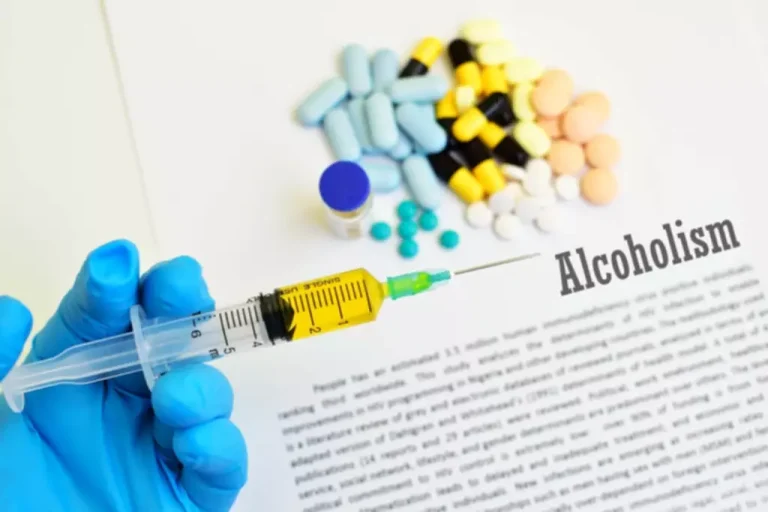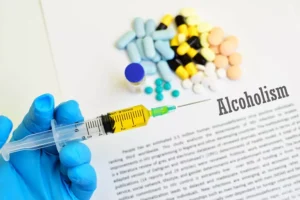
For most people who drink, alcohol is a harmless part of the evening — a beer after work, a glass of wine with dinner, or a drink or two with friends. The Centers for Disease Control and Protection (CDC) recommend that women have no more than one drink per day and that men have no more than two. However, for some people, alcosignshol use doesn’t stop at just a couple of drinks, and it can spiral out of control into addiction. They can go from having a casual drink here or there into becoming an alcoholic. Early intervention in alcohol addiction can significantly improve outcomes and prevent long-term health complications.
Myth 5: Treatment Only Works If You Want It

The early stages of alcohol-related liver disease can potentially be reversed by abstaining from alcohol. If damage persists, alcoholic cirrhosis can develop, which can’t be reversed. Continued liver damage due to alcohol consumption can lead to the formation of scar tissue, which begins to replace healthy liver tissue. When extensive fibrosis has occurred, alcoholic cirrhosis develops. In fact, it’s estimated that up to 90 percent of people who drink heavily have some form of this condition.
- Alcoholism is often misunderstood as a condition where individuals consume alcohol every day.
- Withdrawal symptoms appear when the body’s need for alcohol isn’t met.
- Drunk driving, drinking before or while at work, or drinking against doctor’s orders are clear indications of alcoholism.
- Understanding the signs of alcohol abuse can help you identify a problem in yourself or others.
Alcohol withdrawal: symptoms, timeline and treatment
The image of an alcoholic as someone who’s lost everything – job, family, and self-respect – is a harmful stereotype that obscures the reality of high-functioning alcoholism. The liver, being the primary organ responsible for metabolizing alcohol, can also show signs of stress. Enlarged liver or tenderness in the upper right quadrant of the abdomen may be indicative of alcohol-related liver damage.
What are Withdrawal Symptoms? (+ When Do They Occur)
How drinking affects your work, family, and personal obligations is a crucial aspect of self-assessment. Neglecting responsibilities due to drinking is a clear red flag for alcohol problems. The final step in this self-assessment is to reflect on how drinking affects various aspects of signs of alcoholism your life. This helps identify negative consequences that you might have overlooked.


It is important to know the signs that develop during each stage to ensure your loved one seeks treatment for their addiction early on. The earlier they seek treatment, the better their chance of successful recovery. The symptoms can range from mild to severe, depending on the “stage” of alcoholism. Having support and seeking professional treatment increases the chances for recovery from AUD. Groups such as Alcoholics Anonymous (AA) provide support for people who are recovering. For some people, alcohol misuse results from psychological or social factors.
- Theories suggest that for certain people drinking has a different and stronger impact that can lead to alcohol use disorder.
- There are various types of alcoholics, and not everyone with an alcohol problem fits a stereotype.
- Alcoholic fatty liver disease can be reversed by abstaining from alcohol for at least several weeks.
- They may be able to help the doctor understand the root of the problem, including behaviors that trigger drinking.
- Alcohol tolerance is the ability to drink more than one used to in order to get drunk.
What can happen to your liver if you drink too much alcohol?
- Most individuals in this subtype are middle-aged and started drinking early.
- These symptoms can range from mild to severe and potentially life-threatening.
- People with alcohol use disorder might reduce their participation in social events and become withdrawn over time.
- As soon as the warning signs of alcoholism have become apparent, it is best to seek treatment right away and not wait for the disease to progress further.
- Listen to relatives, friends or co-workers when they ask you to examine your drinking habits or to seek help.
- Pay attention to the warning signs if you suspect that a loved one has a problem with alcohol.
Two key physical markers are withdrawal symptoms and increased tolerance. If your answers raise concerns, or if you’re unsure about your relationship with alcohol, it’s important to seek professional help. Healthcare providers can offer a more thorough assessment and guide you towards appropriate support if needed. Neglecting responsibilities due to drinking is a https://ecosoberhouse.com/ significant red flag for alcohol problems. Assessing your ability to limit or stop drinking is a key indicator of potential alcohol problems. Let’s explore some questions to help you evaluate your control over drinking.

Drinking Is Making You Sick
When dealing with alcohol-related issues, various healthcare providers can offer specialized support. Each type of professional brings unique expertise to address different aspects of alcohol use disorders. Do you continue to drink heavily, even though you’re currently suffering through relationship, work or health problems? Beyond affecting your personal health and happiness, abusing alcohol can also affect those you love and care about. The social implications can be devastating on the individual and their family. Often people struggling with alcoholism isolate themselves from others and avoid loved ones.
You Drink During the Morning
Noticeable physical changes may start appearing after 6-12 months of regular heavy drinking, although this can vary based on individual factors such as genetics and overall health. If left untreated, alcohol abuse can spiral out of control quickly. When alcohol abuse begins to negatively impact a person’s life and causes harm, it is diagnosed as alcohol use disorder (AUD). Recognizing the warning signs of alcohol abuse and getting proper treatment can make a significant difference in someone’s recovery process. American Addiction Centers offers a range of treatment services in facilities across the country to help treat alcohol use disorders. With our help, patients don’t only appear to function normally, but feel and experience life to its greatest potential as a sober and recovering individual.
